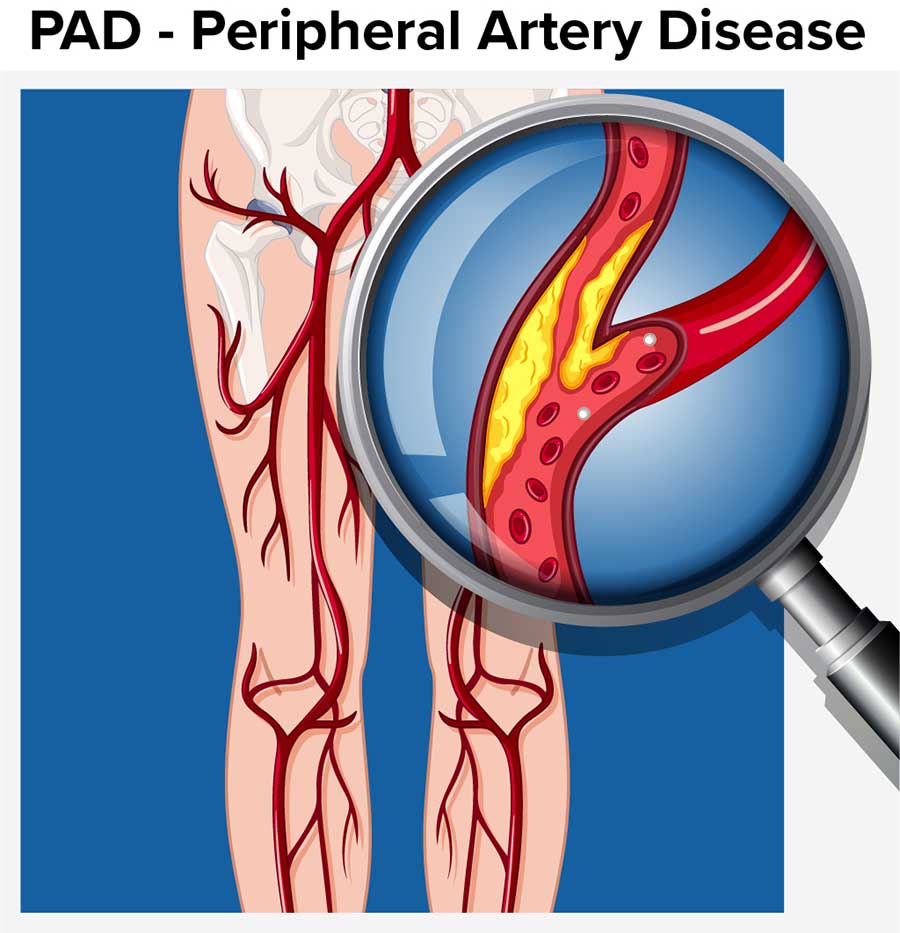 What is PAD?
What is PAD?
Peripheral arterial disease (PAD) in the legs or lower extremities is the narrowing or blockage of the vessels that carry blood from the heart to the legs. It is primarily caused by the buildup of fatty plaque in the arteries, which is called atherosclerosis. PAD can happen in any blood vessel, but it is more common in the legs than the arms.
Who is at risk for PAD?
You are an African American. African Americans are two times more likely to screen positive for PAD than non-Hispanic whites and are at an increased risk to lose a limb.
You have Type 2 diabetes and have a higher risk of developing, the buildup of fatty deposits in the arteries. People with Type 2 diabetes and PAD are up to four times more likely to lose a limb.
You are a smoker. People who smoke have a three times higher risk for PAD than nonsmokers. Smokers with PAD tend to report a lower quality of life than non-smokers with PAD.
What are some symptoms of PAD?
- Leg or foot wounds that are slow to heal.
- Unexplained leg pain or cramping, especially during exercise, walking or climbing stairs.
- Skin problems or discoloration on your legs and feet.
- Lack of growth of your toenails and leg hair.
- One foot feeling colder than the other.
- Leg weakness or numbness, which may make you feel off-balance or make it harder to walk.
- Pain or a feeling of pins and needles in your leg or foot.
What should I do if I have symptoms?
See your doctor for treatment. PAD is a lifelong medical condition. Once you have been diagnosed with PAD, you will need to regularly see a doctor who specializes in vascular diseases.
What will the doctor do?
During an exam to look for signs of PAD, your doctor will take these steps:
- Check for weak pulses in your legs.
- Listen for poor blood flow in your legs.
- Look for problems on your legs and feet, including swelling, sores, or pale skin.
- Your doctor may also do imaging tests such as ultrasound, magnetic resonance angiography (MRA), and computed tomographic (CT) angiography.
What is my treatment?
If you have signs or symptoms of peripheral artery disease, you likely will need additional medical treatment. Your doctor may prescribe medicine to prevent blood clots, lower blood pressure and cholesterol, and control pain and other symptoms. In some cases, angioplasty or surgery may be necessary.
The doctor may also recommend a program of supervised exercise training. Simple walking regimens, leg exercises, and treadmill exercise programs three times a week can result in decreased symptoms in just 4-8 weeks.
How can I lessen my risk of PAD complications?
- Manage your diabetes and blood sugar levels.
- Stop smoking.
- Eat a heart-healthy diet (low in saturated and trans fats)
- Exercise regularly.
- Inspect your feet and toes every day for cuts, blisters, redness, swelling, calluses, or other problems. Use a mirror (laying a mirror on the floor works well) or get help from someone else if you cannot see the bottoms of your feet.